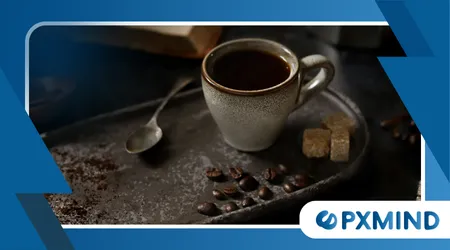How to Beat the Afternoon Slump Without Caffeine

How to Beat the Afternoon Slump Without Caffeine. It’s a familiar, frustrating scene.
Anúncios
The clock ticks past 2 PM, and suddenly, the sharp focus you enjoyed earlier fades into a hazy, heavy-lidded struggle.
That post-lunch lethargy, often called the afternoon slump, sabotages productivity and makes complex tasks feel monumental.
Many people immediately reach for another cup of coffee or a sugary snack to jolt themselves back to alertness.
But this reliance on caffeine creates a dependency cycle, often leading to energy crashes later. Breaking free from this caffeine dependency is crucial for sustained, natural energy and focus.
The key lies in understanding your body’s natural rhythms and implementing simple, powerful adjustments.
The Science of the Slump: Why It Happens
The afternoon slump isn’t merely a sign of poor motivation or a heavy lunch. It is a biological phenomenon rooted in our circadian rhythm.
Around the mid-afternoon, there’s a natural dip in our core body temperature and alertness.
This innate rhythm, coupled with post-lunch digestion, significantly slows cognitive function.
This drop in alertness is known as the postprandial dip, a term often used in sleep and performance science. This natural ebb in energy is entirely normal, but it can be effectively managed.
Hydration and Movement: The Unsung Heroes
The simplest and most immediate solution to a fading afternoon focus is often overlooked. Dehydration is a stealthy culprit in energy loss and mental fog.
Even mild dehydration can impair concentration and mood. A glass of cold water can sometimes be more effective than an espresso shot. Always keep a water bottle visible and within easy reach.
Movement is equally critical for disrupting this sluggish feeling. Sitting stationary for hours reduces blood flow to the brain, which starves it of the necessary oxygen and nutrients.
Read more: Neuroscience Behind Focus
A short, five-minute brisk walk can work wonders. Consider this: your brain is like a highly tuned engine, and a little movement is like topping up its fuel. You don’t need a full workout.
Strategic Breaks: The Power of Micro-Recovery
The inclination to power through the slump is counterproductive; strategic breaks are far more effective.
Taking a micro-break before you hit the wall can save hours of struggling. Stepping away from your screen allows your prefrontal cortex to reset.
Try the Pomodoro Technique principles and schedule short breaks regularly.
One practical example: Instead of checking social media, try staring out a window at a distant object for 60 seconds.
This simple act rests the ciliary muscles in your eyes, reducing eye strain and mental fatigue. This quick rest can dramatically improve your mental clarity.

Light Exposure: Brighten Up Your Focus
Light therapy is an extremely powerful, non-pharmacological way to boost alertness. Natural light exposure helps regulate the production of melatonin, the sleep hormone.
A lack of bright light during the day exacerbates the afternoon slump. Maximizing natural light exposure is a non-negotiable step.
See how interesting: 5 Things Productive People Do Before 9 AM
If possible, spend 10 minutes outdoors during this low-energy period. If that’s not feasible, position your desk near a window.
A desk lamp that simulates daylight can also provide a helpful boost during dark winter months. Studies confirm that exposure to bright light can significantly improve alertness.
The National Sleep Foundation notes that bright light exposure during the day improves sleep quality at night and overall daytime alertness.
Mindful Nutrition How to Beat the Afternoon Slump Without Caffeine
The standard heavy, carb-rich lunch is the quintessential slump accelerator. Large meals trigger a massive insulin response, followed by a sharp blood sugar crash.
This crash leaves you feeling exhausted and mentally foggy. Shifting to a mindful, balanced lunch is essential for sustained energy.
Read here: How Neuroinflammation Contributes to Alzheimer’s & Parkinson’s
Prioritize meals rich in lean protein and complex carbohydrates. An example would be a salad with grilled chicken, quinoa, and varied colorful vegetables.
This combination ensures a slower, steadier release of glucose into the bloodstream.
Think of your body as an oven; a balanced meal is the slow-burning wood, while a sugary meal is a quick flash of paper.
Here is a simplified guide to maximizing post-lunch energy:
| Component | Goal | Example Foods |
| Protein | Steady Energy, Satiety | Chicken, Tofu, Lentils, Eggs |
| Complex Carbs | Sustained Glucose Release | Quinoa, Brown Rice, Sweet Potato |
| Healthy Fats | Brain Function Support | Avocado, Walnuts, Olive Oil |
| Avoid | Quick Sugar Spikes | Sugary drinks, White bread, Fried Foods |
Harnessing Power Naps and Deep Breathing
A short, well-timed nap can be a tremendously effective tool for rejuvenation.
A “power nap” of 10 to 20 minutes improves alertness and motor performance without the grogginess of a longer sleep.
Set an alarm, and stick strictly to the short duration to prevent deeper sleep stages. This is a highly effective way for How to Beat the Afternoon Slump Without Caffeine.
Deep, diaphragmatic breathing exercises are another simple, potent hack. Taking ten deep, slow breaths increases oxygen flow to the brain and calms the nervous system.
This is an immediate, on-the-spot energy restorer, clearing the mental fog almost instantly. Can we truly afford not to adopt these simple, powerful habits for better focus?

The Art of Task Switching for Renewed Focus
When struggling with a difficult task, your brain may be signaling a need for cognitive variety. Instead of forcing concentration, try switching to a less demanding task for a short period.
This practice gives the strained neural pathways a break. Returning to the more challenging work later often yields surprising clarity and renewed vigor.
For instance, if you are writing a complex report and feel your concentration wane, spend fifteen minutes replying to simple emails or organizing your digital files.
This is a subtle yet effective technique for How to Beat the Afternoon Slump Without Caffeine.
Implementing these non-caffeinated strategies ensures consistent, high-quality output throughout the entire workday.
Mastering How to Beat the Afternoon Slump Without Caffeine leads to a more balanced and productive life.
Ultimately, understanding How to Beat the Afternoon Slump Without Caffeine is the path to achieving genuine peak performance without artificial stimulants.
Sustainable Energy for Lasting Productivity How to Beat the Afternoon Slump Without Caffeine
Beating the afternoon slump doesn’t require an endless stream of stimulants; it demands a mindful, holistic approach to your health and work habits.
By incorporating strategic hydration, movement, light, and nutrition, you shift from a reactionary, caffeine-dependent cycle to a place of sustainable energy.
This proactive mastery over your biological clock is the hallmark of genuine, high-level productivity.
It ensures you maintain sharp focus and clear thinking from morning until the end of your workday. Embrace these subtle yet significant shifts and reclaim your afternoons.
Frequently Asked Questions
What is the best time for a power nap to avoid the slump?
The ideal time is typically between 1:00 PM and 3:00 PM, aligning with the natural dip in your circadian rhythm. Keep the nap short, ideally 10 to 20 minutes, to avoid entering deep sleep.
Does music help in combating the afternoon slump?
Yes, listening to music, particularly instrumental or uptempo tracks, can be very effective. It stimulates the brain, elevates mood, and distracts from feelings of fatigue, improving alertness.
How long does the typical afternoon slump last?
The most noticeable phase of the postprandial dip usually lasts between 30 and 90 minutes, though its severity can vary widely depending on an individual’s diet, sleep quality, and activity levels.
++ How to beat the afternoon slump in 8 ways (without coffee)
++ 6 hacks to beat the afternoon slump
